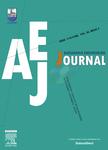版权所有:内蒙古大学图书馆 技术提供:维普资讯• 智图
内蒙古自治区呼和浩特市赛罕区大学西街235号 邮编: 010021

作者机构:Zhengzhou Univ Coll Civil Engn Zhengzhou 450000 Peoples R China
出 版 物:《ALEXANDRIA ENGINEERING JOURNAL》 (Alexandria Engineering Journal)
年 卷 期:2025年第118卷
页 面:606-617页
核心收录:
学科分类:12[管理学] 1201[管理学-管理科学与工程(可授管理学、工学学位)] 08[工学]
主 题:Aqueduct Fluid-structure interaction TLD effect Water action Parametric analysis
摘 要:As a pivotal component within water diversion engineering, the aqueduct has experienced substantial growth in recent years. Scholars have extensively explored the interaction between water and solid structures within aqueducts. Notably, the question of whether the presence of water in the aqueduct can either enhance seismic absorption or exacerbate seismic responses has emerged as a crucial concern in aqueduct structural seismic resistance. To address this quandary, a refined two-way fluid-structure interaction methodology has been employed. This method accounts for variations in water pressure, water inertia forces, excitation frequencies, and aqueduct aspect ratios. It meticulously monitors liquid level changes using the Volume of Fluid (VOF) method, while FLUENT tracks wall pressure. Consequently, it calculates the aqueduct displacement under different influencing factors. The outcomes reveal that the water within the aqueduct exhibits Tuned Liquid Damping (TLD) effects, with the shock absorption effectiveness being directly related to water quality rather than differences in moving water pressure. Higher excitation frequencies result in increased peak aqueduct displacements but reduced water body oscillations. Under consistent water quality conditions, greater aspect ratios yield higher moving water pressures and, consequently, improved shock absorption capabilities.